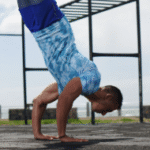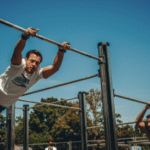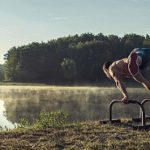Chill Out and Heat Up: The Nordic Cycle Experience
The idea of deliberately switching between intense heat and bracing cold—often involving saunas and cold plunges—is a powerful wellness trend gaining significant traction across the United States. Inspired by time-honored Nordic traditions, this practice, sometimes referred to as the “Nordic Cycle” or contrast therapy, is more than just a physical challenge; it’s increasingly viewed as a holistic ritual for enhancing recovery, boosting mood, building resilience, and achieving a unique state of well-being. This guide details the “Chill Out and Heat Up” experience and how it fits into a broader, Nordic-inspired wellness philosophy.
**Part 1: “Heat Up” – The Power of Heat Therapy**
This phase focuses on raising your body temperature, promoting relaxation and physiological responses associated with heat.
* **Common Methods in the USA:**
* **Traditional Saunas (Finnish):** Offering high dry heat (~170-195°F / 75-90°C), often with the option to create steam (*löyly*) by adding water to hot rocks. Found in many gyms, spas, and increasingly in homes.
* **Infrared Saunas:** Using infrared light to heat the body directly at lower air temps (~120-150°F / 50-65°C). Popular in wellness studios and for home use due to potentially easier installation and lower energy use.
* **Steam Rooms:** Providing high humidity (~100%) at lower temperatures (~110-120°F / 43-49°C). Great for respiratory ease.
* **Hot Tubs/Warm Baths:** An accessible home option for warmth and relaxation, though typically not reaching sauna temperatures.
* **The Experience & Benefits:** Entering the heat brings an immediate sense of warmth that deepens over several minutes. Muscles begin to relax, tension may dissipate, and sweating becomes profuse (the body’s cooling mechanism). Blood flow increases, particularly to the skin. Mentally, it’s often a time for quiet reflection or relaxation, promoting stress reduction and potentially releasing endorphins. Typical duration: 10-20 minutes.
**Part 2: “Chill Out” – The Invigorating Power of Cold Therapy**
This phase involves rapidly cooling the body, triggering a different set of physiological and mental responses.
* **Common Methods in the USA:**
* **Cold Plunge / Ice Bath:** Purpose-built tubs (available at recovery centers, high-end gyms, spas, and increasingly for home purchase) filled with water typically below 60°F (15°C), often targeting 40-55°F (4-12°C).
* **Cold Showers:** The most accessible method – turning the shower temperature down as cold as possible for a short duration.
* **Natural Cold Water:** Swimming in lakes, oceans (seasonal/regional, requires significant safety precautions).
* **The Experience & Benefits:** The initial entry into cold water triggers the “cold shock response”: an involuntary gasp, rapid breathing, and increased heart rate. The key is to **control your breath** (focusing on slow exhales) to manage this initial shock. The intense cold sensation demands immediate mental focus. After the first minute or so, the body may start to adapt; the intense “pain” might subside into deep cold or numbness for some. This phase challenges mental resilience. Benefits include reduced inflammation and muscle soreness, a powerful surge in alertness and focus (from norepinephrine release), and a potential mood boost (dopamine, endorphins). Duration: Much shorter than heat, typically 30 seconds to 3-5 minutes maximum for most users.
**Part 3: The Synergy – Alternating Heat and Cold (Contrast Therapy)**
This involves cycling between the “Heat Up” and “Chill Out” phases multiple times within one session.
* **The Experience:** Moving from intense heat to intense cold and back again creates a dynamic, invigorating sensation. The return to heat after cold often feels like intense tingling as blood rushes back to the skin (vasodilation). The subsequent cold plunge might feel slightly easier than the first. This “vascular workout” is believed by proponents to be highly beneficial.
* **Common Protocol:** A frequent approach is 10-15 minutes in the sauna, followed by 1-3 minutes in the cold plunge, resting briefly, and repeating the cycle 2-3 times, often finishing with cold.
* **Why Combine?** The theory is that the alternating vasodilation and vasoconstriction enhance circulation (the “vascular pump”), potentially speeding the removal of metabolic waste, reducing swelling more effectively, and providing a more robust stimulation to the nervous system compared to heat or cold alone.
**Connecting “Heat Up & Chill Out” to the Broader Nordic Cycle:**
While the temperature contrast is potent, it gains deeper meaning when viewed as part of the holistic “Nordic Cycle” philosophy:
* **`Sisu` (Resilience):** Intentionally facing the discomfort of both intense heat and, especially, cold builds mental grit and the ability to endure challenges.
* **`Hygge` (Coziness/Restoration):** The deep relaxation experienced *during* the sauna session, or the profound sense of calm and warmth *after* completing the entire hot/cold ritual, embodies `hygge`. It’s the essential restorative balance to the stressor.
* **`Friluftsliv` (Nature/Elements):** This practice fosters an appreciation for and adaptation to different environmental elements and temperatures, echoing the Nordic connection to nature’s cycles.
* **`Lagom` (Balance):** Finding the “just right” duration and temperature for *your* body, listening to its signals, and not pushing into dangerous extremes reflects the principle of moderation and balance.
**Embracing the Experience Safely in the USA:**
This powerful ritual requires respect and caution:
* **Medical Check:** **Consult your doctor** before starting, especially if you have cardiovascular conditions (high/low blood pressure, heart disease), Raynaud’s, diabetes, are pregnant, or have other health concerns.
* **Hydrate:** Drink plenty of water before, possibly between cycles, and definitely after. Heat causes significant fluid loss.
* **Start Gradually:** Don’t jump into extreme temperatures or long durations. Acclimatize over time. Begin with shorter sessions (5-10 min heat, 30-60 sec cold) and moderate temperatures.
* **Listen to Your Body:** This is crucial. Exit immediately if you feel dizzy, lightheaded, nauseous, unwell, or experience chest pain or uncontrollable shivering/numbness.
* **Never Cold Plunge Alone:** Particularly when inexperienced or using very cold water. Have someone nearby.
* **Avoid Alcohol:** Do not use hot/cold therapy under the influence of alcohol or impairing drugs.
* **Gradual Warm-up/Cool-down:** Allow your body to readjust naturally after the session. Avoid jumping immediately into extreme opposite temperatures (like a scalding shower right after an ice bath).
**Conclusion:**
The “Chill Out and Heat Up” experience, embodying the principles of contrast therapy through practices like sauna and cold plunging, offers a dynamic and increasingly popular wellness ritual in the USA. It harnesses the power of temperature to potentially improve physical recovery, reduce inflammation, boost mood and alertness, and build significant mental resilience. While a potent component often associated with the “Nordic Cycle,” it’s best understood and practiced as part of that broader philosophy emphasizing balance (`Lagom`), restoration (`Hygge`), and connection (`Friluftsliv`, community). By embracing this ritual safely, mindfully, and consistently, you can tap into ancient wisdom for modern well-being.

Chill Out and Heat Up: The Nordic Cycle Experience
Route
Calisthenics Gym Houston Functional Bodyweight Training
Secondary phone: (346) 483-3195
Email: info@calisthenicsclubhouston.com
URL: https://calisthenicsclubhouston.com/
Monday 6:00 AM - 7:00 PM Tuesday 6:00 AM - 7:00 PM Wednesday 6:00 AM - 7:00 PM Thursday 6:00 AM - 7:00 PM Friday 12:00 PM - 6:30 PM Saturday 9:45 AM - 12:00 PM Sunday 3:00 PM - 5:00 PM





